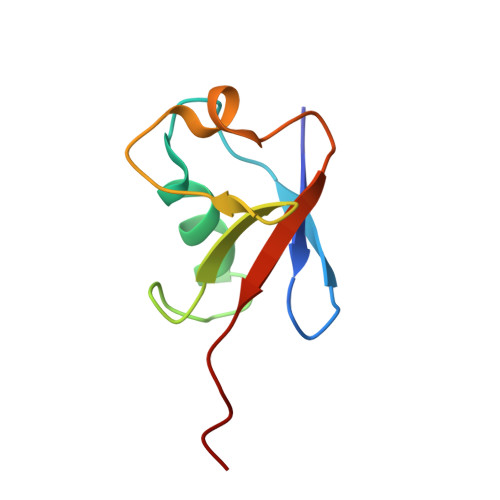High-Resolution Protein 3D Structure Determination in Living Eukaryotic Cells.
Tanaka, T., Ikeya, T., Kamoshida, H., Suemoto, Y., Mishima, M., Shirakawa, M., Guntert, P., Ito, Y.(2019) Angew Chem Int Ed Engl 58: 7284-7288
- PubMed: 30938016
- DOI: https://doi.org/10.1002/anie.201900840
- Primary Citation of Related Structures:
5Z4B, 5ZCZ, 5ZD0 - PubMed Abstract:
Proteins in living cells interact specifically or nonspecifically with an enormous number of biomolecules. To understand the behavior of proteins under intracellular crowding conditions, it is indispensable to observe their three-dimensional (3D) structures at the atomic level in a physiologically natural environment. We demonstrate the first de novo protein structure determinations in eukaryotes with the sf9 cell/baculovirus system using NMR data from living cells exclusively. The method was applied to five proteins, rat calmodulin, human HRas, human ubiquitin, T. thermophilus HB8 TTHA1718, and Streptococcus protein G B1 domain. In all cases, we could obtain structural information from well-resolved in-cell 3D nuclear Overhauser effect spectroscopy (NOESY) data, suggesting that our method can be a standard tool for protein structure determinations in living eukaryotic cells. For three proteins, we achieved well-converged 3D structures. Among these, the in-cell structure of protein G B1 domain was most accurately determined, demonstrating that a helix-loop region is tilted away from a β-sheet compared to the conformation in diluted solution.
- Department of Chemistry, Graduate School of Science, Tokyo Metropolitan University, 1-1 Minami-Osawa, Hachioji, Tokyo, 192-0397, Japan.
Organizational Affiliation:
















